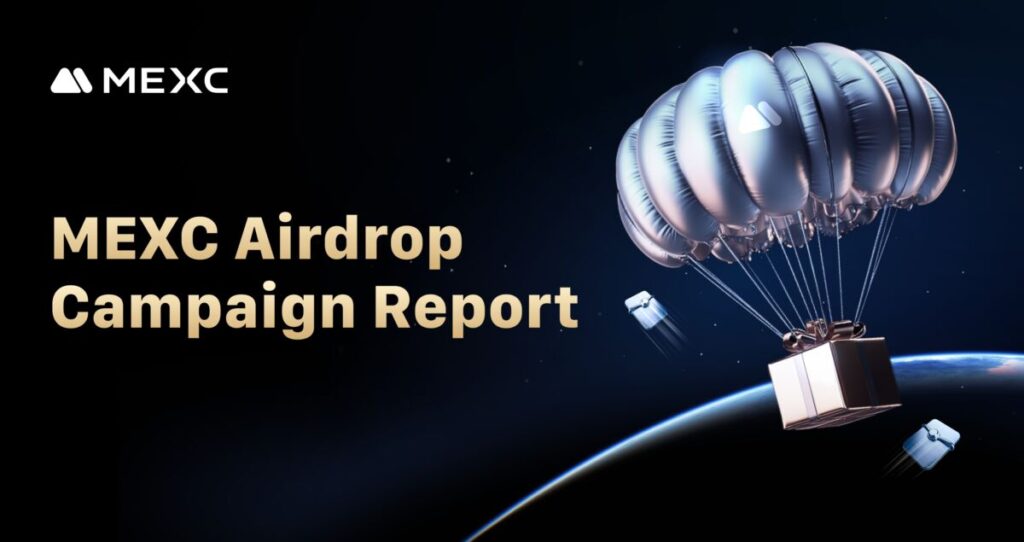
Airdrops continue to lead as one of the most effective tools for attracting new users to the crypto ecosystem, but in 2025, their relevance has reached a new level. According to the latest data from MEXC, one-third (35%) of all new registrations on the platform are driven by airdrop participation. This figure outpaced both referral programs and organic signups, confirming the effectiveness of the token-based incentive model for attracting new users. More importantly, the data points to deeper structural shifts in how and why users engage with airdrop campaigns today.
Key Takeaways:
- Airdrops are the most effective methods for attracting new users, peak user acquisition rates driven by airdrops reach up to 35% in certain months.
- Airdrop participation is no longer solely driven by low banking access — new behavioral factors such as mobile-first tools and gamified mechanics are increasingly influencing engagement.
- The highest involvement was recorded in the CIS (67%), Southeast Asia (51%) and South Asia (32%).
- 76% of users who register via airdrops remain on the platform, with 18% becoming active traders and 58% trading occasionally.
- Airdrops not only serve as marketing tools but also as an alternative means of financial inclusion.
- The total accumulated prize pool for the airdrop is approximately 13,556,900 USD, attracting 469,205 users to grab the pool, as of April 20th 2025.
Shift in Airdrop Participation Trends
Previously, regions with low levels of bank access demonstrated the highest airdrop engagement. However, MEXC data shows a weakening of this dependence.
Previously, regions with low levels of bank access demonstrated the highest airdrop engagement. At the same time, the popularity of new onboarding channels is growing. Tap-to-earn mechanics and the Telegram ecosystem are attracting millions of users with no crypto experience to join airdrop campaigns.
Post-Airdrop User Behavior
Users registering on the exchange to participate in airdrops demonstrate different behavior patterns after receiving free tokens. Some continue actively using the platform, while others may reduce their activity or stop interacting altogether.

According to the analyzed data, the major part of airdrop hunters continue trading and remain engaged with projects after receiving tokens, even if overall ecosystem activity may decrease.
The study showed that:
- 18% continue to trade actively — they regularly make trades and remain involved in the ecosystem.
- 58% make trades occasionally — they use the exchange, but not systematically.
- 24% withdraw funds and do not show further activity.
18% of new users associated with airdrop participation become active traders, with an average daily trading volume exceeding $58,000 — and some reaching as high as $31 million. Despite the high number of initial registrations, the data reveals that 24% of users display minimal activity after participating in airdrop events.
Regional Engagement in Airdrops
An analysis of regional data shows that the most active regions in terms of airdrop engagement are CIS (67%), Southeast Asia (51%), and South Asia (32%). In these regions, high levels of financial exclusion drive interest in free crypto giveaways.
High levels of engagement demonstrated by users in Southeast Asia and South Asia are directly related to limited banking access. According to the World Bank’s 2021 Global Findex report, more than 50% of adults in Indonesia and the Philippines are unbanked. The situation is similar in South Asia, where the same data shows that around 36% of adults in India, Bangladesh, and Pakistan remain outside the traditional financial system. This information is supported by a 2023 report by Chainalysis, which highlights that India, the Philippines, and Vietnam are among the countries with the highest levels of crypto adoption, thanks to a combination of high mobile internet penetration and weak banking infrastructure.

In these economies, cryptocurrencies serve as an alternative financial tool, and airdrops provide a cost-free opportunity to enter the ecosystem without requiring an initial investment. Users can obtain tokens and use them for transactions, remittances, or savings — functions typically reserved for traditional financial institutions.

Airdrops allow users to acquire digital assets that can later be transferred or exchanged, offering an efficient and cost-effective solution for international transactions. This factor has fueled high airdrop participation in regions with large diasporas, such as the Philippines and Pakistan, where remittance inflows are a major part of the economy.
At the same time, Africa and Latin America — two regions previously associated with high crypto adoption — now show similarly low levels of airdrop participation (12% and 16%, respectively). This challenges the earlier assumption that strong social engagement and crypto interest automatically translate into airdrop activity, suggesting that other factors — such as token fatigue, or the rise of alternative entry points like DeFi — may now be more influential.
Case of the CIS Countries and Telegram: Local Specifics
According to MEXC, 67% of new registrations in the CIS countries are driven by airdrops — this is the highest figure among all regions. In the CIS, participation in airdrops has become not just a way to earn income, but a full-fledged cultural crypto phenomenon. Economic motivation remains key: for millions of users from Russia, Ukraine, Kazakhstan and other countries in the region, airdrops are a simple and safe way to earn digital assets.
At the same time, the level of digital literacy in the region is above average, and the high popularity of Telegram creates unique conditions for the scalability of such campaigns.
This was especially evident in 2024, when mass interest in crypto in the region was fueled by tap-to-earn projects. New Telegram games such as Hamster Kombat, Notcoin and Yescoin allowed users to earn tokens by performing simple actions. These tools became the entry point into crypto for millions of new users with no previous experience of interacting with blockchain, wallets or exchanges. Specifically, Hamster Kombat has gained over 70 million users, while Notcoin brought over 5 million subscribers in a month.
Conclusion
The findings from the MEXC report show that airdrops are not just a marketing tool, but a full-fledged mechanism for expanding the crypto ecosystem. New user engagement driven through free token distributions can reach as high as 35% during peak months— and this figure continues to grow due to the emergence of new formats such as tap-to-earn.
The changing geography of engagement and user behavior patterns point to a more complex picture of crypto adoption: from economic necessity to cultural and digital habits. Weakening dependence on bank access, declining interest in Africa and Latin America, and growing engagement through Telegram in the CIS confirm that airdrops are transforming and adapting to the behavior of a new generation of users.
As the crypto market evolves, understanding such behavioral and regional trends becomes critical for startups, exchanges, investors, and all participants in the ecosystem. Airdrops are no longer just a way to distribute tokens — they are one of the key indicators of the maturity, adoption, and effectiveness of the crypto infrastructure on a global scale.
Join MEXC and Get up to $10,000 Bonus!
Sign Up


